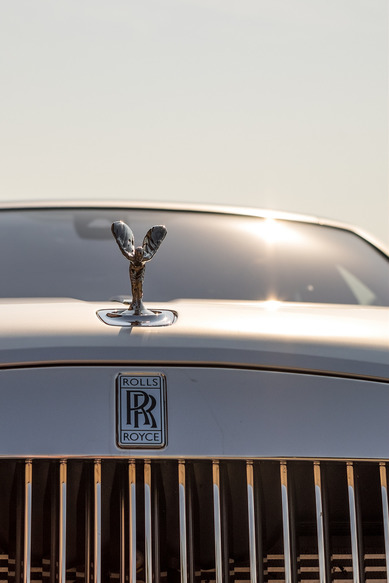Between Stockholm Syndrome and Lima Syndrome
Part 51: The Difference between a Physician and a Clergyman

Born in England, Alan Watts (1915-1973) was an Anglican priest, writer, and speaker. He attended Seabury-Western Theological Seminary, where he received a master's degree in theology. After moving to the United States in 1938 his strong interest in Zen Buddhism and Taoism developed even further, and he became one of the most illuminating interpreters of Eastern philosophy in the West.
Watts became an Episcopal priest in 1945, but left the ministry in 1950 and moved to California, where he joined the faculty of the American Academy of Asian Studies. While working as a volunteer programmer at a radio station in Berkeley, California, he wrote more than 25 books and essays on the philosophy of Zen Buddhism and Taoism, including his bestselling book, The Way of Zen (1957). With this rich spiritual background, to say that Watts knew a thing or two about both Western and Eastern religions—inside out and outside in—would truly be an understatement.
A lucky owner of The Way of Liberation: Essays and Lectures on the Transformation of the Self (1983) which was published posthumously, I have always been drawn into one of his lectures titled The Relevance of Oriental Philosophy. In this particular lecture, Watts invited the audience (members of a Christian theological institution) to consider the difference between a physician and a clergyman.
"The physician wants to get rid of his patients, so he gives them medicine and hopes they will not get hooked on it," said Watts. "The clergyman, on the other hand, is usually forced to make his patients become addicts so that they will continue to pay their dues." Thus, in essence, while the physician's objective is to cure the patients, the clergyman's objective is to sustain the patients' addiction.
The only problem is that the clergyman's patients—a.k.a. the believers—love the addiction. As illustrated in Part 50 (A Self-perpetuating Pyramid Scheme Trickled Down Straight from Heaven), poor Nigerian workers delightfully donated their hard-earned money to a rich Bishop whose net worth of $150 million includes two mansions and four private jets. Indeed this strange phenomenon only exemplifies Karl Marx's observation that "religion is the opium of the people."
This religious Stockholm Syndrome happen all the time in various religions and denominations. A self-declared messiah of the Unification Church, for example, Rev. Sun Myung Moon (1920-2012) drew criticism and charges of brainwashing for demanding his followers (a.k.a. "Moonies") to cut ties with their families and adopt austere lives. At the same time, he built a multi-billion dollar business empire, including a major seafood distributor (True World Foods), a newspaper (The Washington Times), a gun factory (Kahr Arms), and a hotel in Manhattan (New Yorker Hotel).
At the time of his death in India, Bhagwan Shri Rajneesh a.k.a. Osho (1931-1990) owned more than 90 Rolls-Royce cars, which meant he had the largest single collection in the world. In fact, his staunch believers were not content to shower Rajneesh with 90 fancy cars to show their absolute devotion. They had even planned to expand his collection and were aiming to acquire 365 different Rolls-Royce cars, so that Rajneesh would have one for every day of the year!
But why are believers addicted to religion? Why are they addicted to blind worship and devotion in the first place after all? Why do they willingly become Stockholm Syndrome hostages?
[To be continued.]
Johannes Tan, Indonesian Translator & Conference Interpreter
Watts became an Episcopal priest in 1945, but left the ministry in 1950 and moved to California, where he joined the faculty of the American Academy of Asian Studies. While working as a volunteer programmer at a radio station in Berkeley, California, he wrote more than 25 books and essays on the philosophy of Zen Buddhism and Taoism, including his bestselling book, The Way of Zen (1957). With this rich spiritual background, to say that Watts knew a thing or two about both Western and Eastern religions—inside out and outside in—would truly be an understatement.
A lucky owner of The Way of Liberation: Essays and Lectures on the Transformation of the Self (1983) which was published posthumously, I have always been drawn into one of his lectures titled The Relevance of Oriental Philosophy. In this particular lecture, Watts invited the audience (members of a Christian theological institution) to consider the difference between a physician and a clergyman.
"The physician wants to get rid of his patients, so he gives them medicine and hopes they will not get hooked on it," said Watts. "The clergyman, on the other hand, is usually forced to make his patients become addicts so that they will continue to pay their dues." Thus, in essence, while the physician's objective is to cure the patients, the clergyman's objective is to sustain the patients' addiction.
The only problem is that the clergyman's patients—a.k.a. the believers—love the addiction. As illustrated in Part 50 (A Self-perpetuating Pyramid Scheme Trickled Down Straight from Heaven), poor Nigerian workers delightfully donated their hard-earned money to a rich Bishop whose net worth of $150 million includes two mansions and four private jets. Indeed this strange phenomenon only exemplifies Karl Marx's observation that "religion is the opium of the people."
This religious Stockholm Syndrome happen all the time in various religions and denominations. A self-declared messiah of the Unification Church, for example, Rev. Sun Myung Moon (1920-2012) drew criticism and charges of brainwashing for demanding his followers (a.k.a. "Moonies") to cut ties with their families and adopt austere lives. At the same time, he built a multi-billion dollar business empire, including a major seafood distributor (True World Foods), a newspaper (The Washington Times), a gun factory (Kahr Arms), and a hotel in Manhattan (New Yorker Hotel).
At the time of his death in India, Bhagwan Shri Rajneesh a.k.a. Osho (1931-1990) owned more than 90 Rolls-Royce cars, which meant he had the largest single collection in the world. In fact, his staunch believers were not content to shower Rajneesh with 90 fancy cars to show their absolute devotion. They had even planned to expand his collection and were aiming to acquire 365 different Rolls-Royce cars, so that Rajneesh would have one for every day of the year!
But why are believers addicted to religion? Why are they addicted to blind worship and devotion in the first place after all? Why do they willingly become Stockholm Syndrome hostages?
[To be continued.]
Johannes Tan, Indonesian Translator & Conference Interpreter

 RSS Feed
RSS Feed